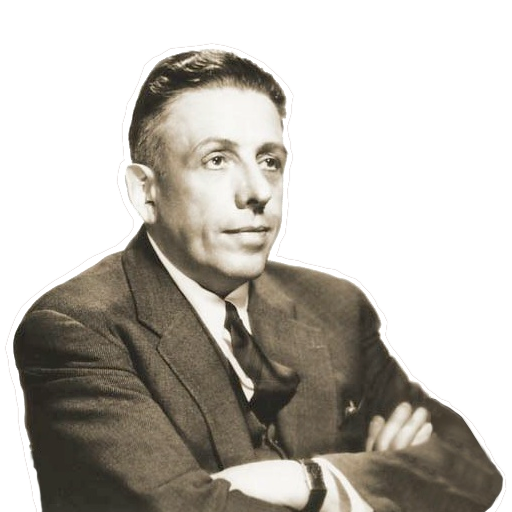
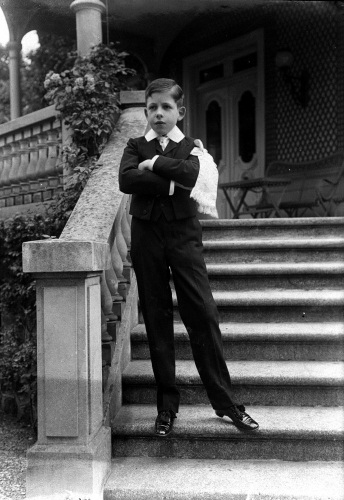
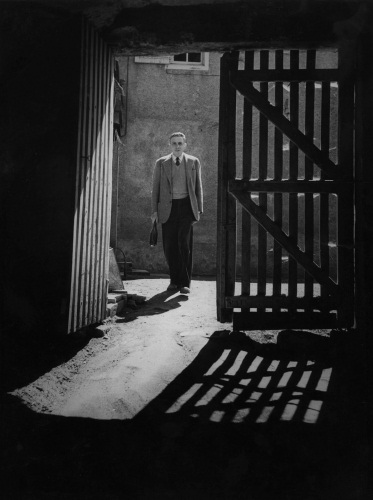
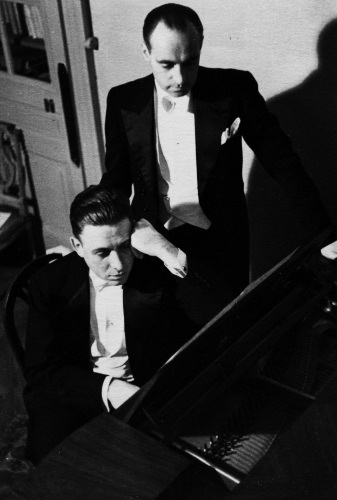

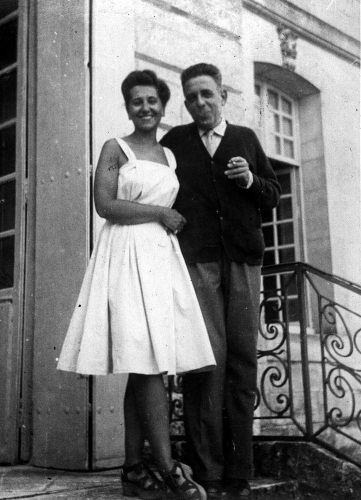
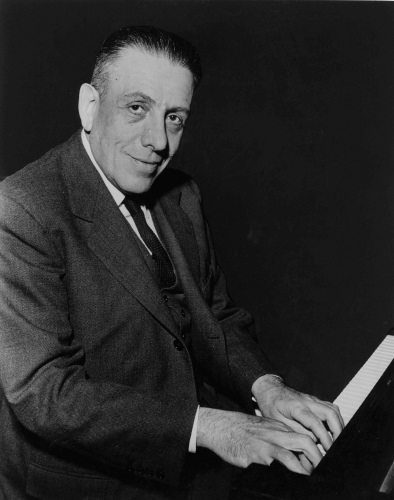
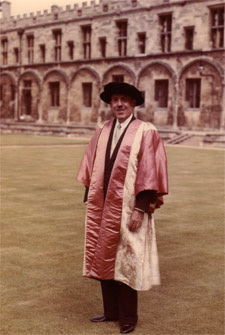
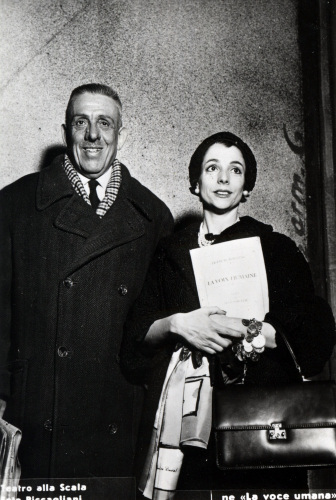
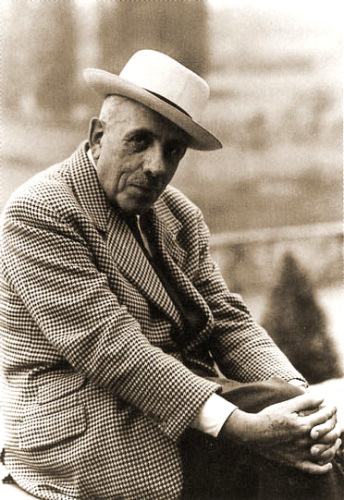
1899 Birth of Francis Poulenc on 7 January. His father, Emile Poulenc, born in 1855, is an industrialist from the Aveyron region who, with his two brothers, runs a chemical factory. His mother, Jenny Royer, is from a family of artisans whose Parisian roots date back several generations.
1904 Jenny sits the young Francis down at the piano and makes him practice Mozart, Schubert and Chopin as well as fashionable romances, ‘loveable bad music’.
1911-13 ‘Oncle Papoum’ (Marcel Royer, Jenny’s brother), who frequently attends the Opéra-Comique, light comedies and avant-garde concerts, reveals Petrushka and The Rite of Spring to the young Francis. This is a veritable revelation, and, throughout his whole life, Stravinsky will remain a master whom he admires immensely.
1914 As his father insists that he do general and studies and not devote himself exclusively to music, Francis Poulenc does not attend the Conservatoire; meets Ricardo Viñes, Catalan professor introduced by Geneviève Sienkiewicz.
1914-17 Viñes teaches him the music of his time – that of Debussy, Stravinsky and Satie – and introduces him to Cocteau, Marcelle Meyer and Satie. The young Poulenc also meets Milhaud.
1915 Death of his mother, Jenny.
1917 Death of his father. Moves in with his sister Jeanne (1887-1974) and her husband, on Rue de Monceau.
Thanks to his childhood friend Raymonde Linossier (1897-1930), Poulenc discovers the Parisian intellectual and literary milieu: first regular visits to Adrienne Monnier’s bookshop (La Maison des Amis des Livres), located at 7 Rue de l’Odéon, where he will be able to meet Aragon, Breton, Eluard and Apollinaire. There, the latter, who will have a lasting influence on Poulenc, reads his own poems and in June gives the premiere of Les Mamelles de Tirésias, a work that Poulenc will set to music in the late ‘40s.
11 December: first performance of Rapsodie nègre, his first work, for voice (baritone) and instrumental ensemble (flute, clarinet, string quartet and piano).
1918 Mobilisation in January at Vincennes, then at the War Ministry until 1921. Meets Manuel de Falla at the home of Ricardo Viñes.
1918 First group of compositions, which, with Stravinsky’s help, will be included in the catalogue of the London publisher Chester as of the following year: Toréador, on poems by Jean Cocteau, the Sonata for 2 Clarinets, the Sonata for Piano 4 hands, the three Mouvements perpétuels. Regularly sees Jean Cocteau, Raymond Radiguet, Max Jacob.
1919 Premiere of Le Bestiaire on poems by Guillaume Apollinaire (with Suzanne Peignot, friend and first interpreter of the composer’s mélodies).
1920 Cocardes, premiered at the Théâtre des Champs-élysées, enjoys a fine success. These three songs on a poem by Cocteau are inspired by the atmosphere of Nogent-sur-Marne – that of fun fairs and open-air dance halls – where Poulenc spends his holidays with family and friends.
Le Groupe des Six (Auric, Durey, Honegger, Milhaud, Poulenc and Tailleferre) is formed.
1921 Le Gendarme Incompris, text by Jean Cocteau and Raymond Radiguet, presented in May at the Théâtre Michel. Premiere in June of Les Mariés de la tour Eiffel, first important work by Les Six, reduced, for this occasion, to five (Poulenc, Auric, Milhaud, Honegger, Tailleferre). Misia Sert attends the performance and introduces the young Poulenc to Serge Diaghilev, the great master of Les Ballets Russes, very much in vogue in the early Twenties.
Beginning of the precious piano teaching of Charles Koechlin (1867-1950), which will last four years; from him Poulenc will learn counterpoint technique and choral writing.
1922 Quatre Poèmes de Max Jacob. Sonata for Clarinet and Bassoon, Sonata for Horn, Trumpet and Trombone. Meets Henri Sauguet. For a few weeks, Poulenc accompanies Darius Milhaud and Marya Freund in Central Europe; he meets Berg, Schoenberg and Webern in Vienna.
1924 At the request of Serge Diaghilev, he composes the ballet Les Biches, premiered in January by the Ballets Russes in Monte-Carlo; sets and costumes by Marie Laurencin. The work achieves a great success.
1926 First performance in May of the Trio for Oboe, Bassoon and Piano and of Chansons gaillardes with Pierre Bernac. Wanda Landowska, whom he met at the Princess de Polignac’s, commissions a concerto for harpsichord from Poulenc.
1927 Acquisition of Le Grand Coteau, his country home, midway between a mansion and a wine-grower’s house, surrounded by vineyards and terraces decorated with gardens à la française. This property, located next to the village of Noizay, between Amboise and Vouvray in Touraine, allows the composer to flee the distractions of Paris and get down to composing in beneficial solitude.
1929 First performance in May of the Concert champêtre by Wanda Landowska and the Paris Symphony Orchestra, conducted by Pierre Monteux in Paris. Composition of eight Nocturnes for solo piano.
Premiere of Aubade, for piano and 18 instruments, to a commission from Vicomte Charles and Vicomtesse Marie-Laure de Noailles.
1930 The death of Raymonde Linossier on 30 January will profoundly affect Poulenc, who felt a very close friendship—or even certainly an unavowed love—for her, dating back to childhood.
1931 Premiere of two song cycles: 4 Poèmes de Guillaume Apollinaire and 5 Poèmes de Max Jacob.
1932 First performance of Le Bal masqué, secular cantata for baritone and chamber orchestra after Max Jacob, to a commission by the Noailleses.Concerto for 2 Pianos to a commission by the Princess Edmond de Polignac in which are found themes inspired by Ravel, Mozart (Concerto K 537 assuredly) and jazz. The premiere takes place on 5 September in Venice, with Francis Poulenc and Jacques Février as soloists accompanied by the Orchestra of La Scala of Milan.
1933 First performance of the Sextet, which will subsequently be revised in 1939, and Improvisations for piano, given for the first time at Salle Gaveau in Paris. As the new works do not bring in much, Poulenc gives his first lectures and begins playing in concert in order to earn a somewhat better living.
1934 8 Chansons polonaises, premiered by singer Marya Modrakowska. In March 5 Poèmes de Pierre Ronsard , performed by soprano Suzanne Peignot, with piano, then the version with orchestra in December. Poulenc is invited on 21 August to participate in a concert of French music in Salzburg.
At his hotel, he finds a note from Pierre Bernac, the baritone of the Chansons gaillardes, inviting him to accompany the singer in Debussy. This unexpected encounter will be the catalyst for Poulenc to get closer to the artist who will henceforth give the first performance of all the future songs for male voice up to the end of their joint career.
1936 Composition of Les Soirées de Nazelles for piano, in the spirit of Couperin’s Folies Françaises, as described by the composer. Moves into Oncle Papoum’s building at 5 Rue de Médicis, facing the Luxembourg Palace.After learning of the terrible death of his friend the composer Pierre-Octave Ferroud in a road accident, Poulenc visits the sanctuary of the Black Virgin in Rocamadour. This triggers a huge religious shock in like a veritable spiritual revelation that will have a lasting effect on his music. In one week, he finishes the composition of Litanies à la Vierge Noire, for women’s chorus and organ. It will be given its first performance on 17 November by Nadia Boulanger, during a BBC concert in London. The first French performance will take place in Lyons, at Salle Rameau, on 3 May 1937, by Les Chœurs de Lyon, at a concert broadcast live over the radio
1937 First performance, with Pierre Bernac, on 3 February at Salle Gaveau of Telle jour telle nuit on poems by Paul Eluard. This cycle is certainly one of Poulenc’s most accomplished and reflects exceptional unity of construction. Premiere on 21 May at Gaveau of Sept Chansons pour chœur a cappella. First performance, in Lyons, of Sécheresses, a contemporary work for mixed chorus and orchestra on poems by Edward James (1908-1984), which, up to the present day, remains particularly ill-known and rarely performed.
1938 Premiere by Les Chœurs de Lyon of the Mass in G major, 3 April in Paris, his first a cappella religious work. First performance of 3 Poèmes de Louise de Vilmorin at Salle Gaveau on 28 November 1938 Priez pour Paix, September.
1939 After a first, private performance given in December 1938 in the Polignac home, the Concerto for Organ, Strings and Timpani has its first public performance on 21 June 1939 at Salle Gaveau; Maurice Duruflé is soloist, and Roger Desormière conducts the Paris Symphony Orchestra. First performance of 4 Motets pour un temps de pénitence on Latin texts for mixed chorus a cappella in February at the church of Saint-Etienne-du-Mont by the Petits Chanteurs à la Croix de Bois. Final version of the Sextet and Fiançailles pour rire, a song cycle on poems by Louise de Vilmorin.
1940 Called up in Bordeaux then discharged in Brive-la-Gaillarde, Poulenc begins working on L’Histoire de Babar and his song cycle Banalités on poems by Apollinaire.
1941 Two motets for mixed chorus a cappella are written in May: Salve Regina and Exultate Deo.
1942 Fiançailles pour rireis premiered by Geneviève Touraine, sister of baritone Gérard Souzay, on 21 May 1942 at the Ecole Normale de Musique, later renamed Salle Cortot. 8 August: premiere of the ballet Les Animaux modèles at the Paris Opera (choreography by Serge Lifar).
1943 Sonata for Violin and Piano, dedicated to the memory of Federico García Lorca, in June; the composer will deem it a failure. The same month, Poulenc gives the first performance of Les Chansons villageoises in a version for voice and orchestra; nowadays, the version with piano is almost systematically performed. Métamorphoses, on poems by Louise de Vilmorin, and ‘C’, on texts by Louis Aragon. Ricardo Viñes dies in the spring.
1944 In February, Max Jacob, a Jew, is arrested by the Gestapo in Orléans then deported to the camp in Drancy, where he dies of exhaustion two weeks later in spite of various interventions, including those of Jean Cocteau and Sacha Guitry, to have him released. Composition at Christmas of Un soir de neige a polyphonic a cappella work on poems by Paul Eluard; the first performance will be given on 21 April 1945 in Paris.
1945 Figure humaine, for double chorus a cappella on poems by Paul Eluard, first performed in English by the BBC Singers of London, on 25 March, then in French on 2 December 1946 in Brussels by the Flemish Radio Chorus. This work of great modernity and polyphonic mastery marks a turning point in the composer’s work.
January 1945 is also the occasion for Poulenc to play his Concerto for 2 Pianos in London with Benjamin Britten. The first Poulenc-Bernac recital is given the same year at Wigmore Hall.
1946 First performance on 14 June of L’Histoire de Babar, based on Jean de Brunhoff’s text, with Pierre Bernac narrator.
1947 Moves into a larger (6th floor) flat at 5 Rue de Médicis, where the composer will live until his death in January 1963.
Les Mamelles de Tirésias based on Guillaume Apollinaire’s ‘surrealistic drama’.
1948 Premiere on 24 October of the Sinfonietta by the BBC Philharmonic Orchestra conducted by Roger Desormière. Calligrammes , after Apollinaire. On 7 November, the Bernac-Poulenc duo makes its American début at Town Hall in New York, then goes on a North American tour (Chicago, Los Angeles, San Francisco, Canada). 4 Petites Prières de saint François d’Assise, Sonata for Violin and Piano.
1949 Premiere on 18 May at Salle Gaveau of the Sonata for Cello and Piano. Composition of the Piano Concerto.
1950 Premiere on 6 January of the Piano Concerto with the Boston Symphony Orchestra conducted by Charles Munch. In November, Poulenc and Bernac give the first performance of La Fraîcheur et le Feu, on poems by Paul Eluard.
1951 Premiere on 13 June at the Strasbourg Festival of the Stabat Mater (for soprano, mixed chorus and orchestra), dedicated to the memory of his friend the painter Christian Bérard, by soprano Geneviève Moizan under the direction of Fritz Munch.
1952 4 Motets pour le temps de Noël, for mixed chorus a cappella. Death of Paul Eluard on 18 November, at the age of 57.
1953 Poulenc begins the composition of Dialogues des Carmélites, having accepted the commission of the Milanese publishers Ricordi after becoming acquainted with Georges Bernanos’ novel. He composes in particular at the Hotel Beau-Rivage in Lausanne then, beginning in January 1954, at the Majestic, in Cannes. First performance of the Sonata for 2 Pianoson 2 November.
1954 Egyptian tour with Bernac; recitals continue in Europe (London, Amsterdam, Germany).
1955 Deaths of Adrienne Monnier, Lucien Roubert and Arthur Honegger. In this atmosphere of profound sadness, Poulenc completes Dialogues des Carmélites in its preliminary version with piano.
1956 Composition of Le Travail du peintre, a song cycle on poems by Eluard from which he selects a song for Picasso, Chagall, Braque, Juan Gris, Klee, Miró and Jacques Villon. Finishes the orchestration of Dialogues.
1957 On 26 January, premiere, in Italian, of Dialogues des Carmélites at La Scala in Milan. First performance on 18 June of the Sonata for Flute and Piano, at the Strasbourg Festival, by Jean-Pierre Rampal accompanied by Poulenc himself. Three days later at the Opera, the Paris premiere of Dialogues, which will be revived on 8 November the following year. It is a tremendous success and a considerable relief for Poulenc who had never invested so much time and energy in a musical work. Composition of the Elégie for Horn and Piano.
1958 Composition of La Voix humaine, a lyric tragedy on a 1930 text by Cocteau.
1959 Premiere of La Voix humaine on 6 February at the Opéra-Comique, directed by Cocteau himself, and marked by Denise Duval’s very moving interpretation.
On 27 May, at Salle Gaveau, Poulenc’s 60th birthday is celebrated with the final concert by the marvellous Bernac-Poulenc duo, with Bernac making his final stage appearance.
Composition of the Laudes de saint Antoine de Padoue and the Elégie for 2 pianos.
1960 American tour and US premiere on 23 February of La Voix humaine (at Carnegie Hall in New York, with Denise Duval), as well as Les Mamelles de Tirésias.
1961 Last trip to the United States. Premiere on 20 January in Boston of the Gloria, a large motet for soprano solo, four-part mixed chorus and orchestra. Whereas Charles Munch conducted the premiere, Georges Prêtre conducts the Orchestre National de France and the French Radio Chorus in the French premiere on 14 February. Appearance of the orchestral version of Babar realised at Poulenc’s request by his friend Jean Françaix. On 5 December, Denise Duval performs La Dame de Monte-Carlo at the Théâtre des Champs-Elysées, with the Orchestre National de France conducted by Georges Prêtre. Today, the version with piano is more frequently performed.
Poulenc publishes a biography on Emmanuel Chabrier.
1962 Sept Répons pour les ténèbres. Composition of the Sonata for Clarinet and Piano and the Sonata for Oboe and Piano, posthumous; their first performances will be given in April and June 1963, after Poulenc’s death.
1963 Fatal heart attack on 30 January at his domicile at 5 Rue de Médicis. At the composer’s request, the funeral is held in the utmost simplicity, the only music being by Bach. Francis Poulenc is buried at the Père Lachaise cemetery, alongside his family.
Translation : John Tuttle
